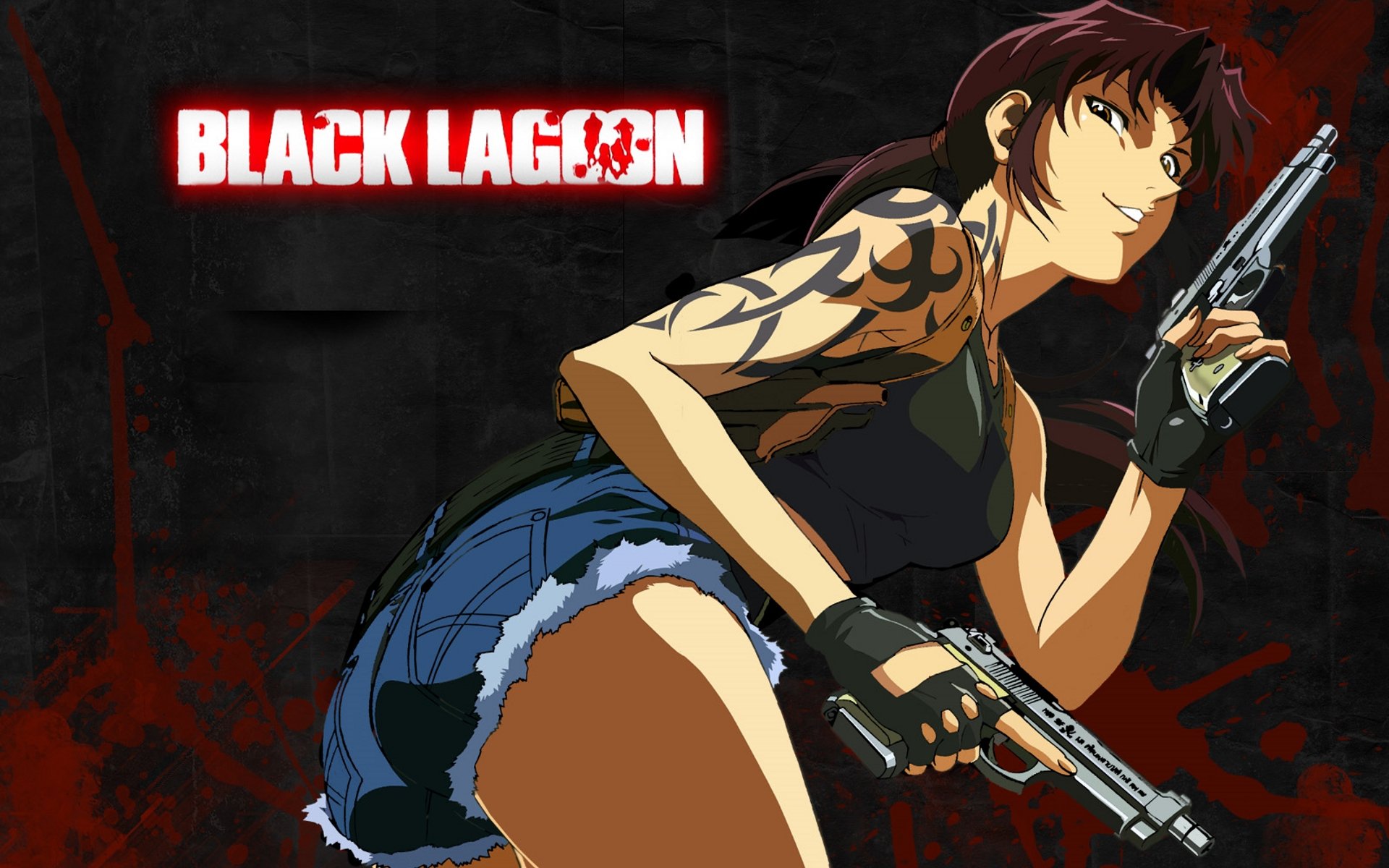 ★★★½
★★★½
“Black to basics.”
Thanks to Dieter for pointing me in the direction of this series, whose 24 episodes feel like a bit of a throwback to the days when watching anime felt hard-edged and dangerous, almost a subversive act. Mind you, this actually came out in 2006, so I guess it’s actually something of a throwback, full stop. [Random aside of no relevance to anything much: startled to realize today it’s more than eight years since Salt came out. Would have sworn it was only about three, tops] It’s hyper-violent, clearly for mature viewers only, and its multiple action heroines possess generally poor attitudes. Clearly up my street!
It takes place in what I’m going to assume is a somewhat alternate reality, where the Thai city of Roanapur has become a modern-day equivalent to Tortuga, the 17th-century pirate haven in the Caribbean. It’s a free-fire zone where organized crime operates with impunity, including Japanese, Chinese, Russian, Colombian and Italian groups, along with all the necessary “support services,” from gun-runners to brothels. Lagoon Company are one such, mostly specializing in smuggling goods, people or whatever needs to be moved quietly around. Into this setting falls the unfortunate Rock (Namikawa), a Japanese salaryman on business, whose ship is boarded by Lagoon, and he is taken hostage. After his company abandons him, to conceal the shady business they were doing, he joins Lagoon as an accountant-interpreter-negotiator-factotum. He’s in for a culture shock.
Leading the parade of counter-heroines is the Chinese-American Revy (Toyoguchi), who is Lagoon’s main enforcer, and loves her job, which she carries out enthusiastically, with the slightest provocation. She’s a fascinating character: Revy has absolutely no scruples about blowing away anybody who gets in her way, and in “normal” society would be far beyond the pale. However, in Roanapur, she’s just one among a myriad of similar types – there, scruples are likely to get you killed – and her unswerving loyalty to the rest of Lagoon, and Rock in particular, are a redeeming quality. She prefers to wield, with extreme prejudice and skill, a pair of modified Beretta 92FS’s, and Revy’s ambidextrous skill has earned her the nickname “Two Hand” around town.
 If she were the only candidate, this might end up being a bit of a borderline entry, but over the 24 episodes in the two series (there’s another five-episode arc I haven’t seen, Roberta’s Blood Trail, which came out in 2010), Revy is joined by a number of other, morally ambiguous women, all of whom are more than comfortable with firearms:
If she were the only candidate, this might end up being a bit of a borderline entry, but over the 24 episodes in the two series (there’s another five-episode arc I haven’t seen, Roberta’s Blood Trail, which came out in 2010), Revy is joined by a number of other, morally ambiguous women, all of whom are more than comfortable with firearms:
- “Balalaika” – the pseudonymous head of Hotel Moscow, the Russian crime group under whom Lagoon frequently operate. She’s a veteran of the Soviet occupation of Afghanistan, which left her with serious burns. She got her name from the sniper rifle which was her weapon of choice, and often calls upon her ex-Army colleagues when reinforcements are needed.
- Eda – a drinking buddy of Revy, she’s a nun in the Church of Violence a.k.a. the Rip-off Church. They are perhaps the premier gun-running outfit in Roanapur, who count Lagoon among their customers, and you interfere with the Church or its leader Yolanda, at your own peril.
- Roberta – the maid of the Lovelace family, one of the leading South American cartels. When its scion, Garcia, is kidnapped, Roberta goes on the hunt. Turns out she’s actually a former FARC guerrilla, who had been trained as an assassin in Cuba, and proves capable of fighting Revy to a time-limit draw.
- Gretel – one of two Romanian orphans, who may be the most screwed-up characters in the whole show, due to their background in child porn and worse. [‘Snuff said, shall we say…] While life is generally cheap in this series, she and her brother Gretel take sadistic and visceral pleasure in torturing their victims, extreme even for this show.
- Yukio Washimine – daughter of a yakuza boss. She takes over the group after the incumbent is killed by Balalaika, despite Rock’s efforts to prevent this.
There are all, in their own way, interesting (if largely damaged, in some cases severely) characters, who have enough potential that they could each merit their own series. Add them to Revy, and its an impressive line-up, even if some only appear for a couple of parts. The structure of the series generally has each arc occupying two episodes, though the Washimine storyline occupies the final six. It’s a good approach, allowing for a bit more expansion than the 25-minute format usually permits. My main gripe is the near-total lack of character development over the two seasons. Revy, Dutch and just about everyone else are the same at the end of the show as at the beginning. There’s no sense they’ve learned anything from their experiences, and even Rock has simply settled into his new life with barely a ripple. The show seems more interested in their past, than their future.
It is still a lot of fun to watch – admittedly, you need to suspend your disbelief in the way gun battles work. But if, like me, you’re a fan of John Woo films like A Better Tomorrow (an obvious and admitted influence), then the remarkable invulnerability to bullets shown by Revy, etc. will not be an issue. Having cut my anime fandom teeth on the likes of Wicked City and Vampire Hunter D, this plays like the organized crime equivalent, and provides an enjoyable blast from the past.
Dir: Sunao Katabuchi
Star (voice): Megumi Toyoguchi, Daisuke Namikawa, Tsutomu Isobe, Mami Koyama
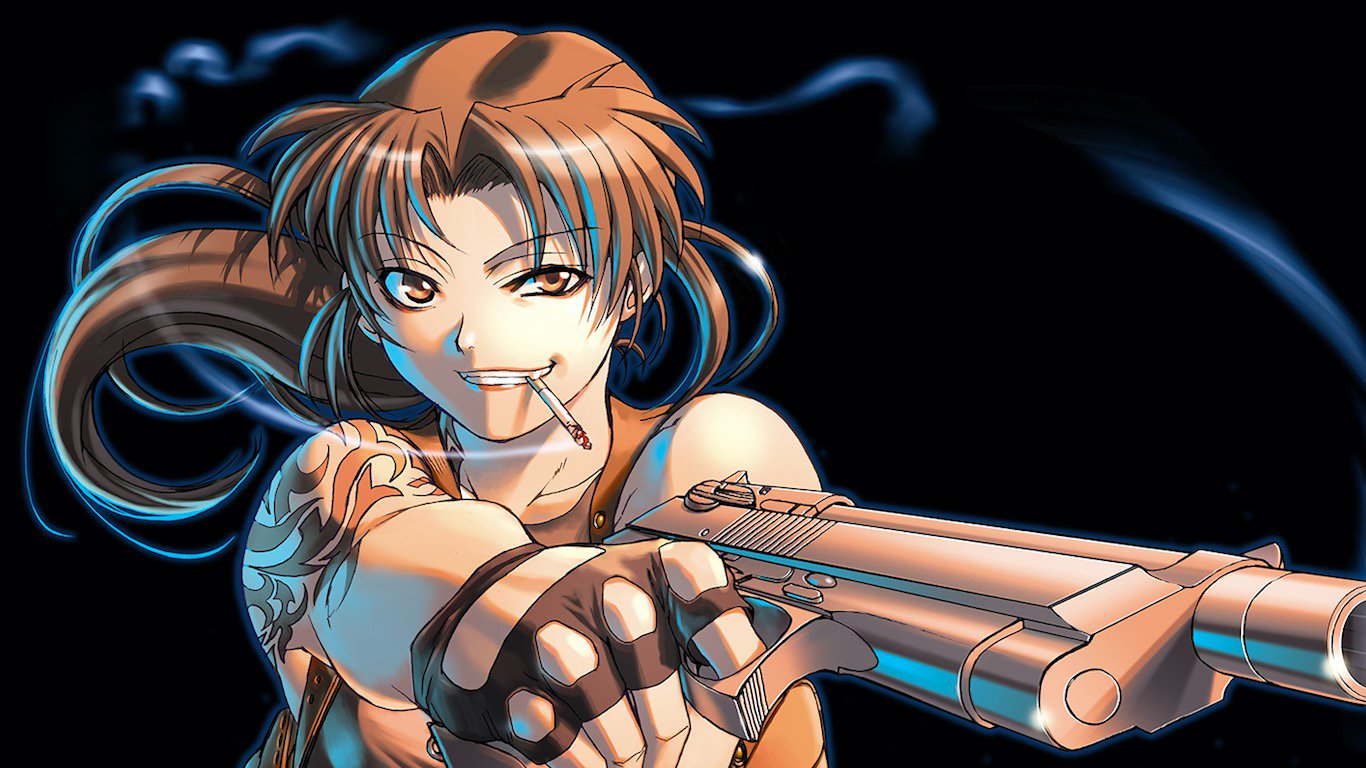





 While not the first to be released, this was the first movie directed by Miike, who would go on to become one of the most prolific – yet, still, critically-lauded – directors to come out of Japan in the last quarter-century. Perhaps this is well-informed hindsight: yet, if still pretty basic in its content, it does feels at least somewhat above what you would expect from a straight-to-video movie by a first-time director.
While not the first to be released, this was the first movie directed by Miike, who would go on to become one of the most prolific – yet, still, critically-lauded – directors to come out of Japan in the last quarter-century. Perhaps this is well-informed hindsight: yet, if still pretty basic in its content, it does feels at least somewhat above what you would expect from a straight-to-video movie by a first-time director. The above line of dialogue is a perfect litmus test for what you’ll think of this. If your reaction is a derisive snort, this pair of hour-long items – I have qualms about calling them anything as high-minded as “feature films” – is probably not for you. And I cheerfully admit, snorting is probably the default, and understandable, reaction. If, on the other hand, you are giddy with anticipation at the very thought, then I probably cannot recommend it highly enough.
The above line of dialogue is a perfect litmus test for what you’ll think of this. If your reaction is a derisive snort, this pair of hour-long items – I have qualms about calling them anything as high-minded as “feature films” – is probably not for you. And I cheerfully admit, snorting is probably the default, and understandable, reaction. If, on the other hand, you are giddy with anticipation at the very thought, then I probably cannot recommend it highly enough.

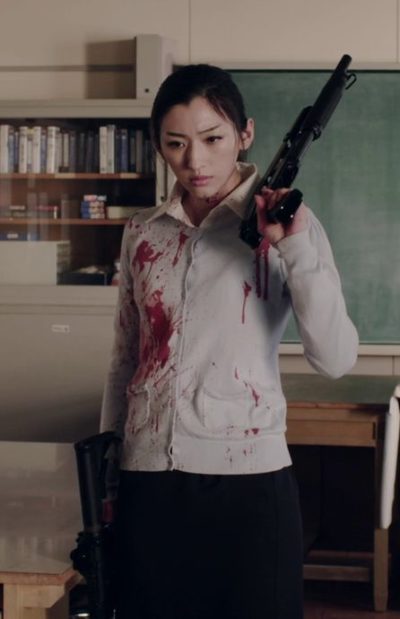 A bus full of Japanese schoolgirls includes the quiet, poetry-writing Mitsuko (Triendl), who drops her pen. Bending down to pick it up, she thus survives the lethal gust of wind which neatly bisects, not only the bus, but the rest of her classmates. Ok, film: safe to say, you have acquired our attention. [Not for the first time the director has managed this: the opening scene of his Suicide Circle is one we still vividly remember, 15 years later]
A bus full of Japanese schoolgirls includes the quiet, poetry-writing Mitsuko (Triendl), who drops her pen. Bending down to pick it up, she thus survives the lethal gust of wind which neatly bisects, not only the bus, but the rest of her classmates. Ok, film: safe to say, you have acquired our attention. [Not for the first time the director has managed this: the opening scene of his Suicide Circle is one we still vividly remember, 15 years later]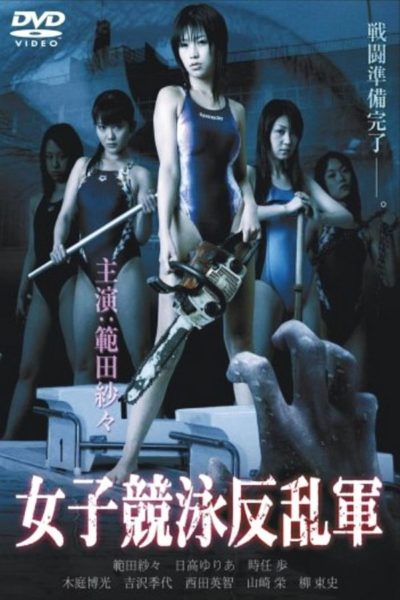 I strongly prefer the alternative name (as given in the credits below, though in some territories this was also known as Inglorious Zombie Hunters) – it’s one of the finest exploitation titles of all time, both describing exactly what the film is about, while simultaneously reeling in the potential viewer. Certainly beats something which sounds more like an Asylum “mockbuster” version of a certain, snarky Marvel superhero. If the product itself doesn’t quite live up to it’s own name, this mostly a case of, really, how could it?
I strongly prefer the alternative name (as given in the credits below, though in some territories this was also known as Inglorious Zombie Hunters) – it’s one of the finest exploitation titles of all time, both describing exactly what the film is about, while simultaneously reeling in the potential viewer. Certainly beats something which sounds more like an Asylum “mockbuster” version of a certain, snarky Marvel superhero. If the product itself doesn’t quite live up to it’s own name, this mostly a case of, really, how could it? There are times when a film doesn’t deliver anything close to what the sleeve promises. This would be one of those times. However, in this case, while disappointed, I can’t claim it was an entire waste of my time. Or, at least, it wasn’t a waste of very
There are times when a film doesn’t deliver anything close to what the sleeve promises. This would be one of those times. However, in this case, while disappointed, I can’t claim it was an entire waste of my time. Or, at least, it wasn’t a waste of very 
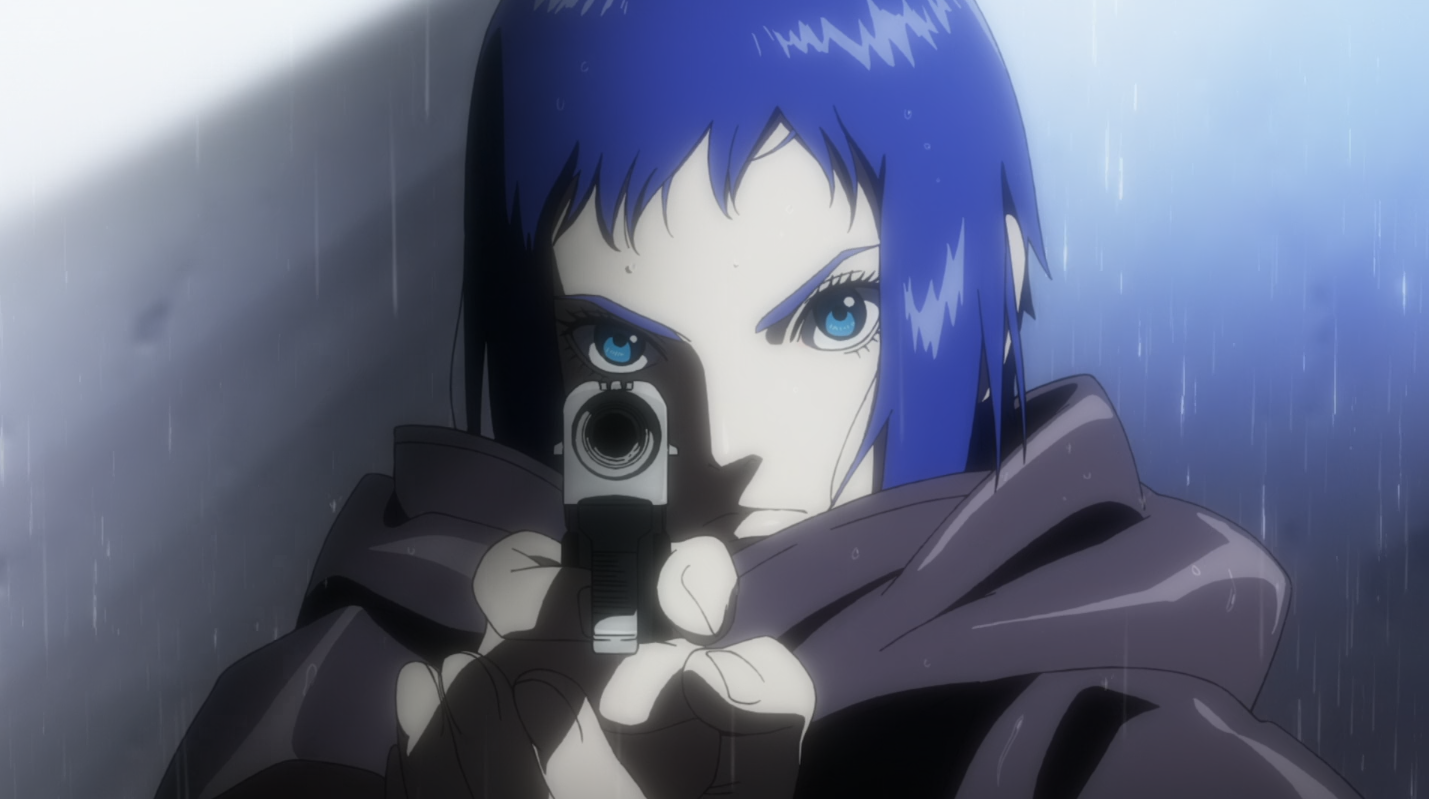 ★★★★
★★★★ Over the course of the four episodes, she recruits others whose names will be familiar. For example, ex-Ranger Batou (Sabat), comes aboard after initially being part of a team working against Kusanagi, who are trying to prove government complicity in war crimes. This is an interesting change, compared to the previous versions, which always seemed to join Section 9 “in progress,” and provides some intriguing insight into what makes – literally, to some extent – the Major the way she is. For, in this incarnation, we discover that she has been in her prosthetic body since birth, and has never known any other way of life.
Over the course of the four episodes, she recruits others whose names will be familiar. For example, ex-Ranger Batou (Sabat), comes aboard after initially being part of a team working against Kusanagi, who are trying to prove government complicity in war crimes. This is an interesting change, compared to the previous versions, which always seemed to join Section 9 “in progress,” and provides some intriguing insight into what makes – literally, to some extent – the Major the way she is. For, in this incarnation, we discover that she has been in her prosthetic body since birth, and has never known any other way of life. This is largely included purely for completeness: if this had been a stand-alone film, it likely wouldn’t have qualified, not reaching the mandatory minimum quota of action heroineness. For in this sequel, Major Kusanagi (Tanaka) has abandoned even her artificial physical form, for life entirely inside the Internet. Her presence in this is therefore more spiritual, with Batou (Yamadera) referring to her as his “guardian angel”, and her impact is more felt than seen – particularly in its ramification for Batou, whose degree of cybernetic enhancement is not much lower than hers. She only returns to a tangible persona in the final scene, where Batou has to take on a near-endless stream of combat-reprogrammed sex robots. My, that’s a phrase I never thought I’d be writing…
This is largely included purely for completeness: if this had been a stand-alone film, it likely wouldn’t have qualified, not reaching the mandatory minimum quota of action heroineness. For in this sequel, Major Kusanagi (Tanaka) has abandoned even her artificial physical form, for life entirely inside the Internet. Her presence in this is therefore more spiritual, with Batou (Yamadera) referring to her as his “guardian angel”, and her impact is more felt than seen – particularly in its ramification for Batou, whose degree of cybernetic enhancement is not much lower than hers. She only returns to a tangible persona in the final scene, where Batou has to take on a near-endless stream of combat-reprogrammed sex robots. My, that’s a phrase I never thought I’d be writing…